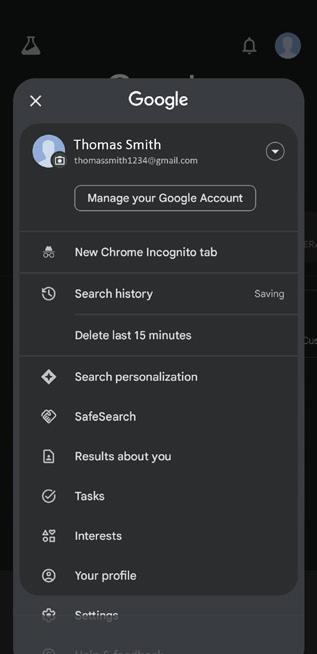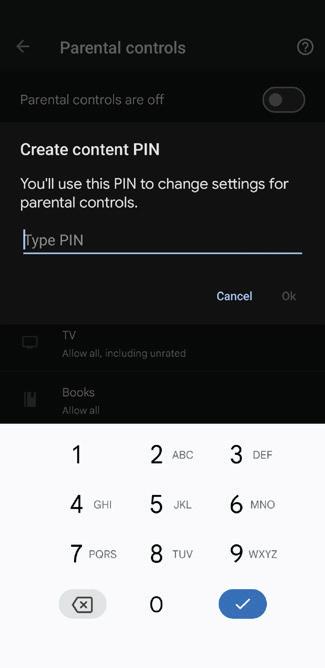A Parent’s Guide
Set Up Google Family Link
How To:
• Download the Google Family Link app from the Google Play Store on both your device and your child’s device.
• Follow the prompts to create a Google account for your child if they don’t have one.
• Link your child’s account to yours using the Family Link app.
• Set screen time limits, approve or block app installations, and manage app permissions through the Family Link app.
Why it Helps:
Google Family Link provides comprehensive control over your child’s device, enabling you to monitor and manage their online activities effectively.

Enable SafeSearch
How To:
• Go to Settings on your child’s device.
• Navigate to Google > Search >General and turn on SafeSearch.
Why it Helps:
SafeSearch helps filter out explicit content in Google search results, providing a safer browsing experience for your child.

Restrict App Installations and In-App Purchases
How To:
• Open the Google Play Store app and go to Settings.
• Tap on Parental controls and turn them on.
• Set up a PIN code to prevent unauthorized changes.
• Configure restrictions for app installations, in-app purchases, and content ratings
Why it Helps:
These controls prevent your child from downloading inappropriate apps and making unapproved purchases.

Set Up Content Filtering in Google Play
How To:
• Go to Google Play Store > Settings > Family > Parental controls.
• Enable parental controls and set restrictions based on content ratings for apps, games, movies, TV, and books.
Why it Helps:
Content filtering ensures that your child only accesses age-appropriate content across various media types.

Use Device-Level Settings to Restrict Access
How To:
• Go to Settings > Users & accounts and set up a restricted user profile.
• Customize which apps and features the restricted profile can access.
Why it Helps:
A restricted profile limits your child’s access to only the apps and settings you approve, enhancing their safety.

GENERAL Tips
Regularly Update Android OS: Keep your child’s device updated with the latest Android version to ensure all security features and parental controls are up-to-date.
Discuss Safe Practices: Educate your child about the importance of not sharing personal information online, recognizing suspicious behavior, and reporting anything unusual.
Review Apps and Settings Periodically: Regularly check the apps installed on your child’s phone and their settings to ensure compliance with your safety guidelines.
Use Third-Party Monitoring Apps: Consider using reputable parental control apps like Qustodio, Norton Family, or Bark for additional monitoring capabilities.
By implementing these steps, you can significantly enhance your child’s safety and help them develop healthy, responsible online habits.
Regularly discussing online safety and maintaining open communication with your child are key components of effective digital parenting.


